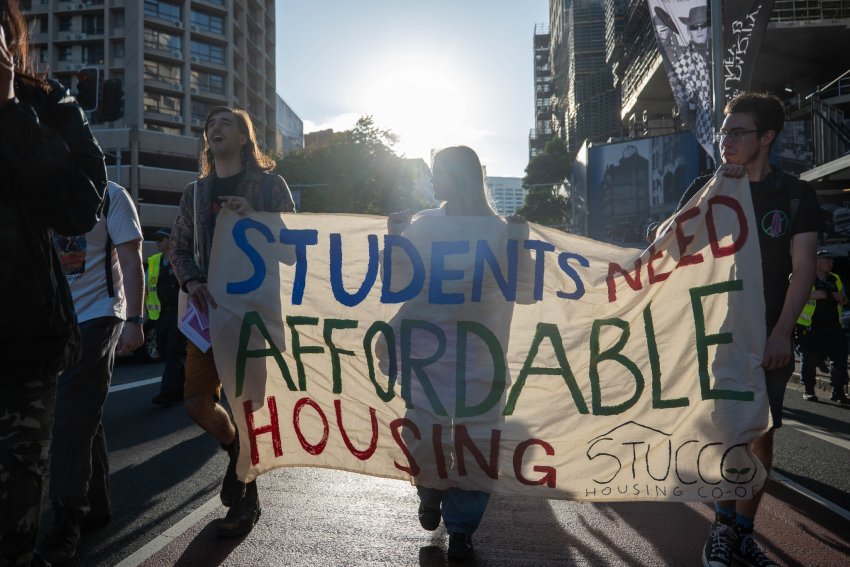
Labor’s budget is a huge disappointment for many, but especially young people struggling with the cost-of-living crisis, surging rents and expensive education.
Despite significant pressure from welfare recipients and advocates to raise the JobSeeker rate and other payments above the poverty line, they only rose by $40 a fortnight.
Even Labor's Economic Inclusion Advisory Committee found, in April, that a rise of about $256 was needed, which would raise payments to 90% of the Age Pension. It found that the previous payment rate of about $49 a day was a barrier to people trying to find work.
Forty dollars a fortnight is a drop in the ocean against the rising cost of food, petrol, housing and education: it works out to less than $3 a day, barely enough for a loaf of cheap bread.
“We do not welcome this insult,” the Antipoverty Centre said. “A deficit or a surplus, it doesn’t matter to the communities who need housing and a rate above the poverty line to pay their bills and buy their food.”
The raise also applies to Youth Allowance and Austudy — payments available for students — but they are still less than JobSeeker and well below the poverty line.
Accessing Youth Allowance is still difficult for students under 22 years old, who are deemed to be tied to their parents’ finances even if they are not.
Lowering the age of independence was a key part of a National Union of Students (NUS) report that, last year, found that the rule was entrenching disadvantage for students who could not, or did not want to, live at home.
In addition, international students cannot access Youth Allowance or Austudy.
NUS organised a protest outside Parliament House on budget day, alongside the Australian Unemployed Workers’ Union and Get A Room!, calling for JobSeeker to be raised to $88 a day and for AUKUS and the Stage 3 tax cuts to be scrapped.
“What good is $2.85 a day when rents are going up by hundreds of dollars a week?,” NUS Education Officer Xavier Dupé said.
The government claims not to have the money to address poverty, but is still spending $243 billion on tax cuts for the rich and $368 billion on nuclear submarines, he said. “If the [government] wanted to make sure no one is left behind they would cancel these and direct funds to lifting people out of poverty.”
Disadvantaged students are skipping meals to pay bills, and inadequate pay and insecure work eats into their study time, leading to many discontinuing their formal education.
The single parent payment has been expanded, raising the cut-off age from 8 to 14. This will be an extra $176.90 a fortnight for single parents who are on the base rate, but does not fully undo Julia Gillard’s cuts, which lowered the cut-off age from 16 to eight years old.
While these will make a difference to some, Ben Phillips argued in The Conversation that they will “not make a significant difference to poverty in Australia”.
Precarious housing
Young people are overwhelmingly renters, but the budget offered only piecemeal solutions to the rent and housing crisis. They include a 15% rise to the rent assistance payment for welfare recipients, amounting to a raise of up to $31 a fortnight. This is nothing when compared to the record rent rises over the past few months: some renters have been hit with rises of hundreds of dollars a week.
Anti-poverty campaigners said rent assistance does nothing to address housing affordability, and the payment is not available to the homeless.
The budget includes a few other measures to address the housing crisis, with most confined to the housing future fund, which is being debated in the Senate.
Other changes include an expansion of the First Home Guarantee scheme, tax breaks for “build-to-rent” properties and additional funding for community housing providers.
HECS/HELP debts continue to rise
Surprisingly, little change to education was made, but 300,000 fee-free TAFE and vocational training positions will be funded and 5000 scholarships, plus other funding, have been allocated for more teachers.
The budget does not scrap the automatic indexation of HECS/HELP debts, meaning students will be hit with an average of $1700 in extra debt this June.
It did include 4000 additional university places over the next four years, focused on science, technology, engineering and mathematics subjects that support AUKUS and further tie universities to the military-industrial complex.
University of Sydney Student Representative Council president Lia Perkins told Honi Soit: “It is disappointing to see the government prioritise creating a surplus, cutting taxes on the wealthy and minor relief measures”, while doing little to improve the lives of students.
“The cost of living crisis is hitting students hard … This budget will worsen the divide between the wealthy few who are making profits while everyone else struggles to get by.”
The ABC’s “Federal budget 2023: Winners and Losers” counts young people as “winners”, despite conceding there is “not much targeted support for young people listed in this budget”.